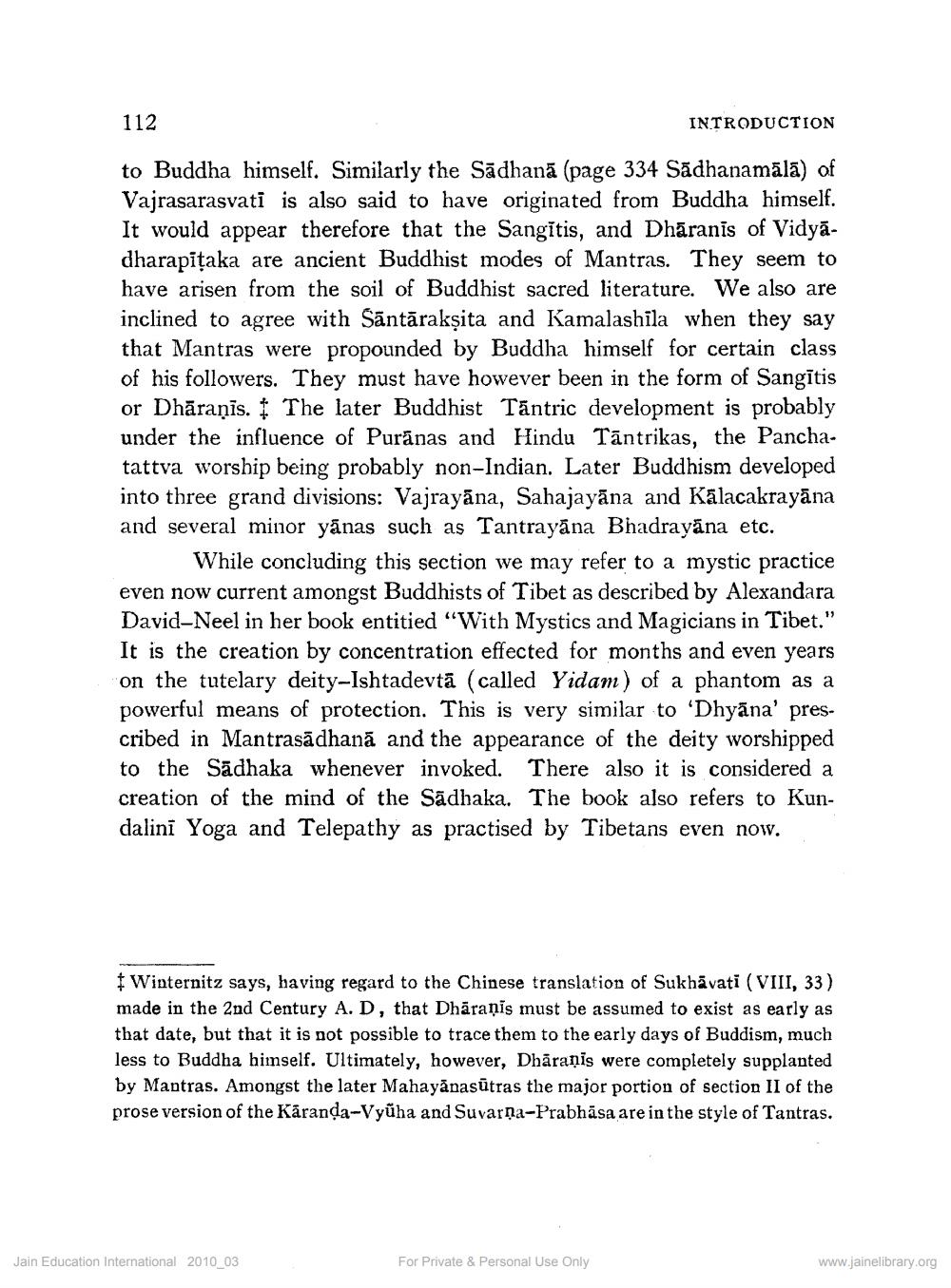________________
112
INTRODUCTION
to Buddha himself. Similarly the Sādhanā (page 334 Sadhanamālā) of Vajrasarasvati is also said to have originated from Buddha himself. It would appear therefore that the Sangītis, and Dhāranis of Vidyādharapițaka are ancient Buddhist modes of Mantras. They seem to have arisen from the soil of Buddhist sacred literature. We also are inclined to agree with Sāntāraksita and Kamalashila when they say that Mantras were propounded by Buddha himself for certain class of his followers. They must have however been in the form of Şangītis or Dhāraṇīs. I The later Buddhist Tântric development is probably under the influence of Purānas and Hindu Tantrikas, the Panchatattva worship being probably non-Indian. Later Buddhism developed into three grand divisions: Vajrayāna, Sahajayāna and Kalacakrayāna and several minor yānas such as Tantrayāna Bhadrayāna etc.
While concluding this section we may refer to a mystic practice even now current amongst Buddhists of Tibet as described by Alexandara David-Neel in her book entitied "With Mystics and Magicians in Tibet." It is the creation by concentration effected for months and even years on the tutelary deity-Ishtadevtā (called Yidam) of a phantom as a powerful means of protection. This is very similar to 'Dhyāna' prescribed in Mantrasādhanā and the appearance of the deity worshipped to the Sādhaka whenever invoked. There also it is considered a creation of the mind of the Sadhaka. The book also refers to Kundalini Yoga and Telepathy as practised by Tibetans even now.
Winternitz says, having regard to the Chinese translation of Sukhāvati (VIII, 33) made in the 2nd Century A. D, that Dhāraṇīs must be assumed to exist as early as that date, but that it is not possible to trace them to the early days of Buddism, much less to Buddha himself. Ultimately, however, Dhāraņis were completely supplanted by Mantras. Amongst the later Mahayānasūtras the major portion of section II of the prose version of the Käranda-Vyűha and Suvarna-Prabhāsa are in the style of Tantras.
Jain Education International 2010_03
For Private & Personal Use Only
www.jainelibrary.org




